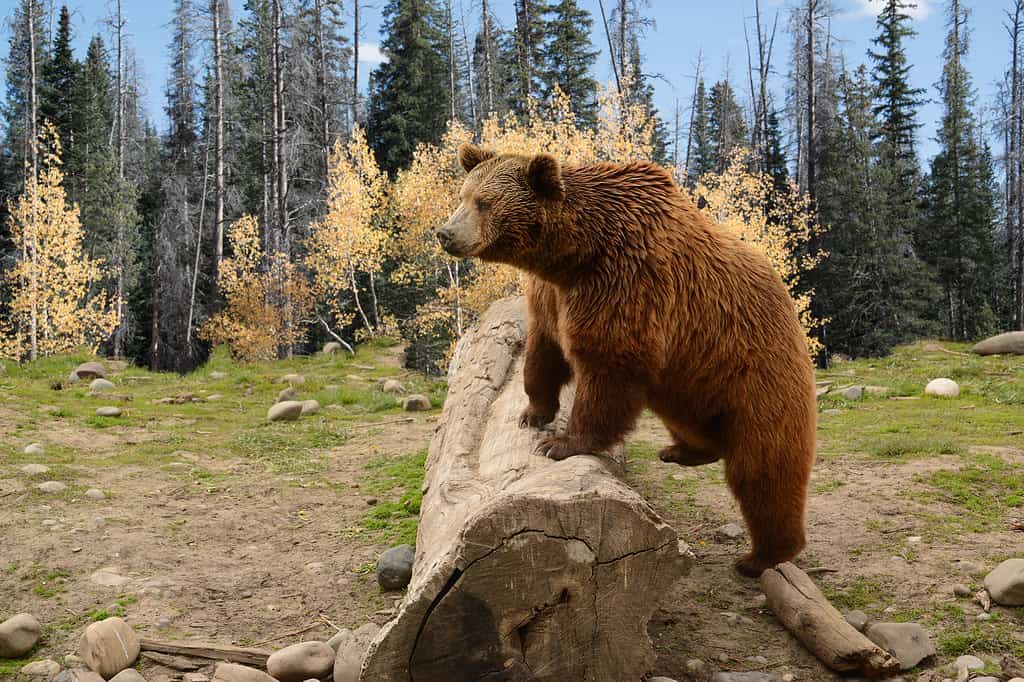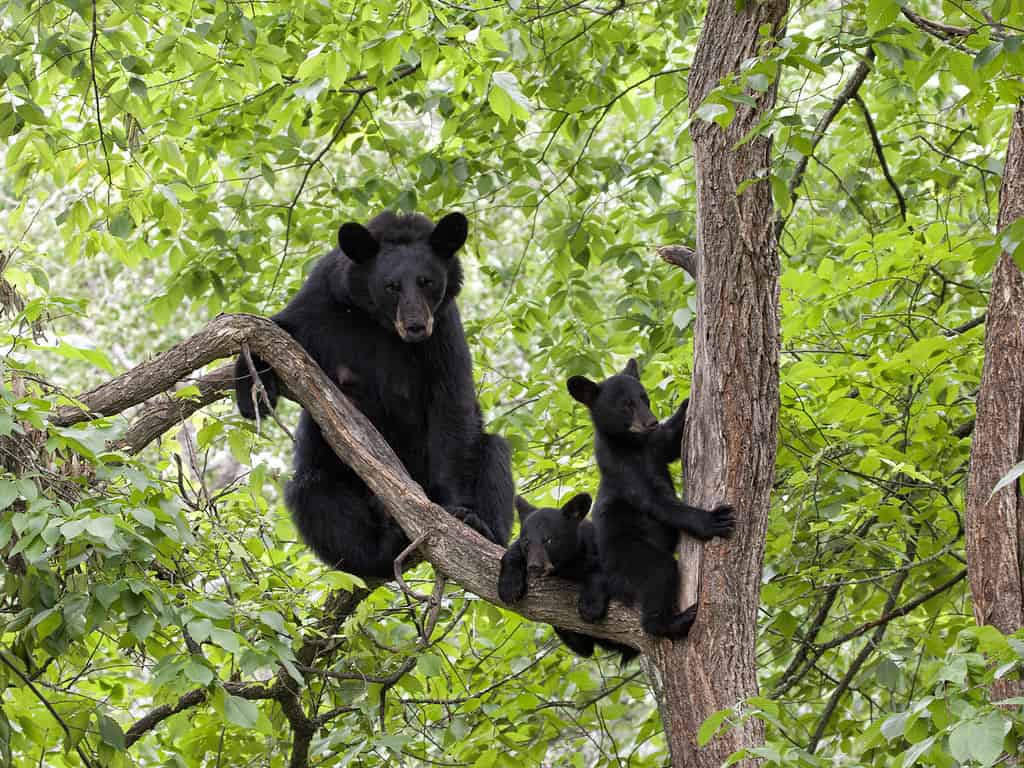Native black bears roam across Oregon’s wild spaces, foraging vegetation, fruits, nuts, and occasionally meat. Oregon has a controlled black bear hunting policy that runs twice a year in spring and fall. Hunters can shoot one black bear, but what’s the largest black bear ever caught in Oregon?
The Largest Black Bear Ever Caught in Oregon

The largest black bear ever caught in Oregon had a skull measurement of 13-12/16 inches long.
©Ghost Bear/Shutterstock.com
According to Boone and Crocket‘s official records, the largest black bear ever caught in Oregon was shot by John Carnate in 1988. Its skull measured 13-12/16 inches long by 8-9/16 inches wide (22-5/16 inches on the official Boone and Crocket score). From nose to tail, this epic bear measured seven and a half feet long. Carnate explained that the black bear had old, broken teeth that were worn down, and it was very thin. Experts estimated a grand old age of 30 years.
The Largest Ever Black Bear Ever Caught
Robert J. Shuttleworth harvested the largest ever black bear legally caught in the United States. His 1993 catch had a skull measurement of 23-3/16 inches. However, the largest ever black bear skull was found in Utah, Santape Creek in 1975. This one measured a whopping 23-10/16 inches.
Largest Bear Ever Caught in Oregon

Oregon is no longer home to grizzly bears. The last grizzly died in 1931.
©Georgia Evans/iStock / Getty Images Plus via Getty Images
Black bears and grizzly bears were once common in Oregon, but hunters persecuted grizzlies to extinction. A grizzly called Old Reelfoot, due to his missing paw, is the biggest bear ever caught in Oregon. This mammoth bear measured seven feet tall, and nearly nine feet on his back legs. However, on April 5, 1890, hunters tracked him down and shot him. He weighed a whopping 1,892 pounds.
Forty years after Old Reelfoot lost his life, a federal trapper killed the last Oregon grizzly bear at Billy Meadows, Wallowa County in September 1931.
How Many Black Bears Live in Oregon?
Oregon is home to at least 25,000 black bears that roam forests and mountains, and on occasion, enter farmlands to attack livestock. Even though black bears are omnivores that eat berries, nuts, grasses, and fruit, they are more than capable of killing mammals such as elk, deer, and cattle.
Bear Hunting In Oregon

In Oregon it’s illegal to harvest mother bears with cubs, or cubs under a year old.
©dssimages/iStock via Getty Images
There’s a controlled bear hunting season in Oregon state. Hunters must obtain a permit and abide by the rules that mother bears with cubs, and cubs under a year old, must not be killed.
The spring season runs from April 1 to May 31, and in fall from August 1 to December 31. Only one bear per tag is lawful.
Hunters that manage to bag a black bear should present its skull to the Oregon Department of Fish and Wildlife (ODFW) within ten days, so officials can harvest a tooth for conservation and biological information. If possible, officials request female black bears’ reproductive tracts.
During 2022, bear hunters harvested a total of 1,997 of Oregon’s black bears. 807 in the summer and 1,190 in the fall.
Let’s break that down into east and west:
Western Oregon total: 502 in spring and 651 in fall
Eastern Oregon total: 305 in spring and 539 in fall
The greatest number of harvested bears occurred in spring hunting season at Siuslaw, western Oregon. Hunters bagged 112 black bears there. In comparison, the greatest number of black bears successfully hunted in eastern Oregon numbered 43 at Snake River.
Black Bear or a Grizzly Bear?
Grizzlies bears don’t live in Oregon now, despite their native status. If you spot a brown, reddish, pale-colored bear in Oregon, it’s a black bear, they don’t all have black coats.
The photo featured at the top of this post is © Greg Norgaard /iStock / Getty Images Plus via Getty Images
Thank you for reading! Have some feedback for us? Contact the AZ Animals editorial team.







